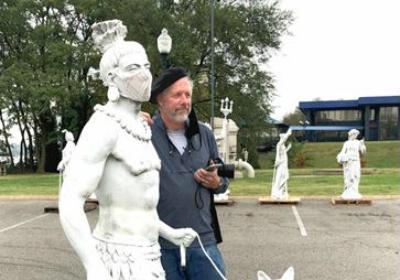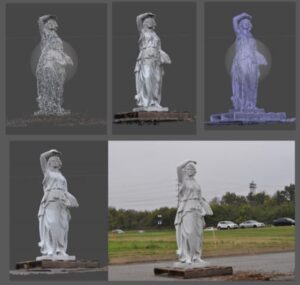 Armenian Church ruins in eastern Turkey, Roman ruins in Lebanon, monasteries in Burma, Bhutan and Mongolia — these are the just a few of many sites where restoration projects have benefited from Stephen J. Kelley‘s expertise as a historic preservation specialist. Now he’s using his skills and experience to help restore the Louisville Water Tower.
Armenian Church ruins in eastern Turkey, Roman ruins in Lebanon, monasteries in Burma, Bhutan and Mongolia — these are the just a few of many sites where restoration projects have benefited from Stephen J. Kelley‘s expertise as a historic preservation specialist. Now he’s using his skills and experience to help restore the Louisville Water Tower.
“During my career I have passed through and around Louisville and have known about the tower for quite some time,” Kelley said. “It is an easy monument to remember because of its exceptional classical beauty. I was of course excited with the possibility of consulting on its coninued preservation and maintenance. I have devoted my career to historic preservation, and it is more of a passion than a discipline to me.”
Based in Chicago, Kelley is an architect and engineer working with Kentucky-based K. Norman Berry Associates Architects, which is coordinating the current restoration of the tower and its statues. “I have been working with KNBA Architects off and on for close to 25 years, beginning with extensive work at the Kentucky State Capitol,” Kelley said. “I am pleased to be working again on the KNBA team.”
Combining beauty and utility
French architect Claude Nicolas Ledoux merged architectural beauty with industrial efficiency to create a Roman Temple design for Louisville Water’s original Zorn Avenue pumping station, which began operating in 1860. The tower in front of it was in use until 1910. A standpipe inside the structure equalized pressure from two massive steam pumps in the station. Without the tower, pressure surges would have cracked the pipes that went up to the reservoir.
The tower was rebuilt after an 1890 tornado. From 1990 to 1993, a major restoration included rebuilding the shaft and placing a a new dome on top. The statues were taken down and stripped of 27 layers of paint. Bullet holes were found and repaired. The tower and statues were repainted again from 2006 to 2008, and some of the tower’s soffits were repaired. In 2019, a piece of the wood molding inside the tower fell. It showed extensive insect damage and rot. Further study found moisture damage to the entire structure, which led to the current renovation.
Kelley brings to the project not only his 35 years of experience with architectural restoration around the world but also affiliation with several preservation organizations, including serving on the board of directors for the Association for Preservation Technology and the U.S. Committee of the International Council on Monuments and Sites. He is a UNESCO Tangible Heritage Expert, and he has both taught at the unversity level and published widely on various aspects of preservation.
Examining the “patient”
Kelley said he and KNBA are analyzing the Louisville Water Tower by performing a range of tests before deciding on the best approaches to the restoration. “We are presently conducting laboratory studies on the materials that were used in the construction,” he said. “Is the shell composed of cast iron or steel? Why is the galvanized sheet-metal rusting so quickly?
“We have also set up monitoring devices throughout the Water Tower to better understand the climate inside. We can evaluate the water tower like a doctor examining a patient to understand which past repairs were successful and which were not.”
Kelley hopes the project will not just restore the historic tower but also help Louisville Water preserve it well into the future. “We believe a good goal is to bring the Louisville Water Tower to a state where it needs to be maintained rather than repaired,” he said. “Future maintenance should entail painting and little else.”


